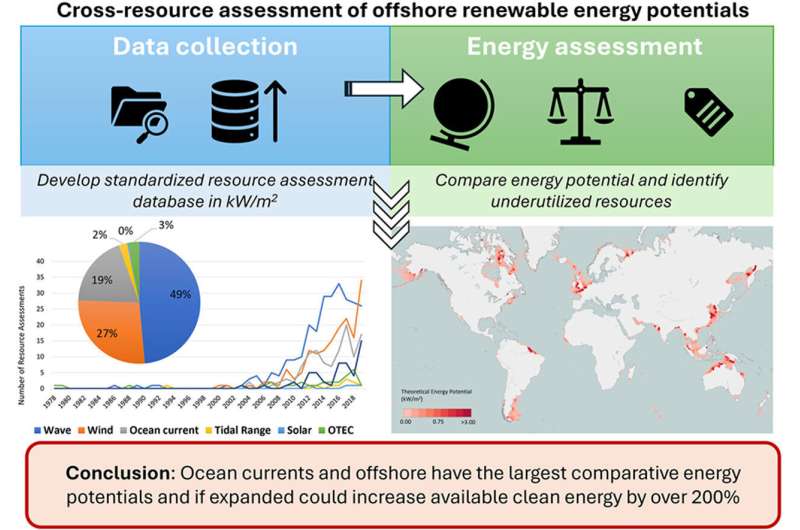
A recent study reveals that tapping into just 2% of tidal and offshore solar energy could significantly reduce global carbon dioxide emissions.
Researchers from the Universities of Strathclyde and Maine analyzed over 660 evaluations of offshore renewable energy across more than 3,000 locations globally. They discovered that tidal and solar energy consistently outperformed other sources like wind and wave, yet received considerably less research attention and remain largely unutilized.
Offshore solar energy stood out for its reliability and less variability compared to other sources, making it a prime candidate for future energy strategies. Interestingly, despite having lower theoretical potential, wind and wave energy accounted for about 75% of the assessments included in the study.
This research is documented in the journal Renewable and Sustainable Energy Reviews.
Small Contribution, Big Impact
The findings suggest that even a small percentage of tidal and offshore energy resources could play a crucial role in decreasing CO2 emissions and in helping achieve the United Nations’ Sustainable Development Goals (SDGs) related to climate action and access to clean energy.
If we consider 2019 emission levels, leveraging just an extra 2% of combined tidal and solar energy could eliminate 0.299 gigatons of CO2 annually, potentially leading to net neutrality in about 68 years.
The researchers standardized their energy assessments into a single unit of kilowatts per square meter (kW/m²), marking this as one of the first comprehensive studies on global offshore renewable energy resources.
Untapped Potential
James Spalding, a Ph.D. student and lead researcher, remarked, “This is the first time we’ve been able to make such an extensive comparison. By standardizing data, we’ve uncovered critical opportunities for clean energy that have largely gone unnoticed.”
“Our research emphasizes the importance of identifying regions with the most substantial resource potential instead of limiting ourselves to what is already technologically viable. The potential for offshore renewable energy could be twice the current global electricity demand, enhancing access to clean energy for countries with smaller economies that rely on fossil fuel imports.”
The energy sector needs to generate at least 60% of its output from renewable sources by 2030 and 80% by 2050 to achieve net-neutral CO2 emissions. Yet, in 2019, renewables constituted only 23% of global energy, with less than 1% derived from offshore sources. Notably, over half of the ocean energy capacity came from projects in Europe, primarily from offshore wind, tidal current, and conversion technologies.
The research covered data from six global regions, categorized as eastern North Atlantic, Mediterranean, eastern North Pacific, coastal Asia, western North Atlantic, and the southern hemisphere, analyzing six types of offshore renewable energy: wave, offshore solar, tidal range, and ocean thermal energy conversion (OTEC).
For further information:
Spalding James et al, A global cross-resource assessment of offshore renewable energy, Renewable and Sustainable Energy Reviews (2025). DOI: 10.1016/j.rser.2025.115563
If you would like to see similar Tech posts like this, click here & share this article with your friends!

